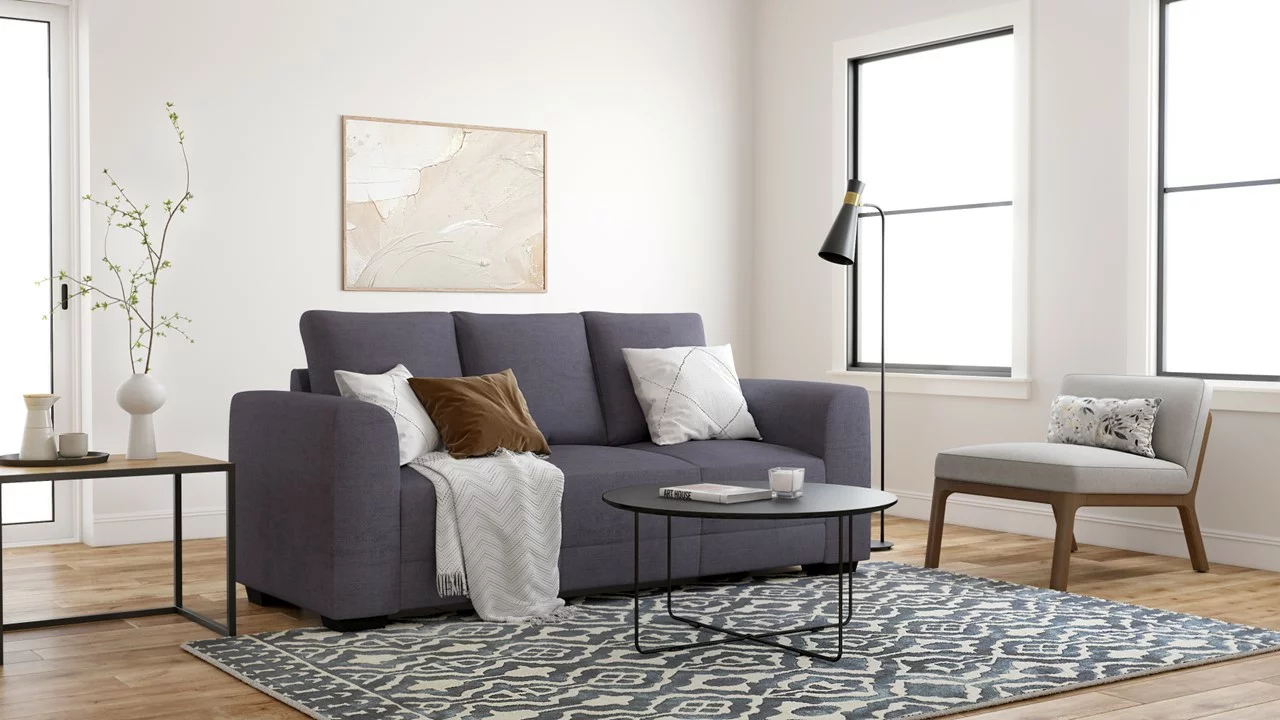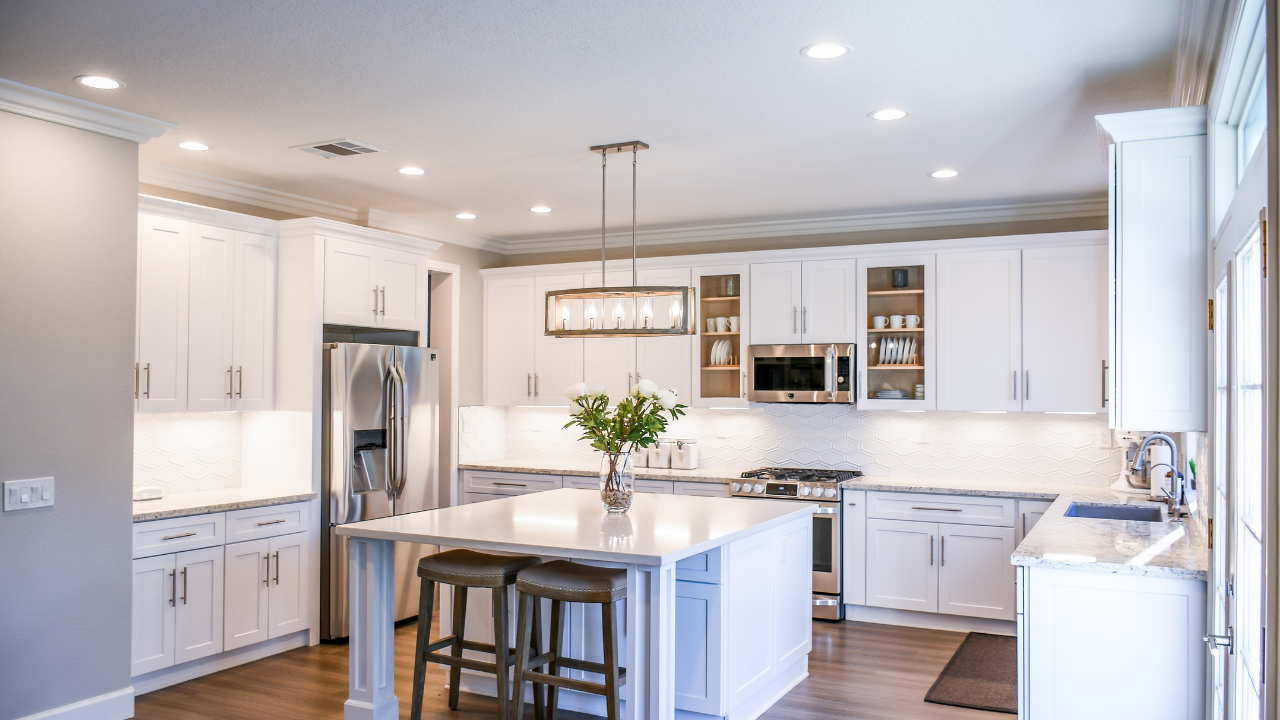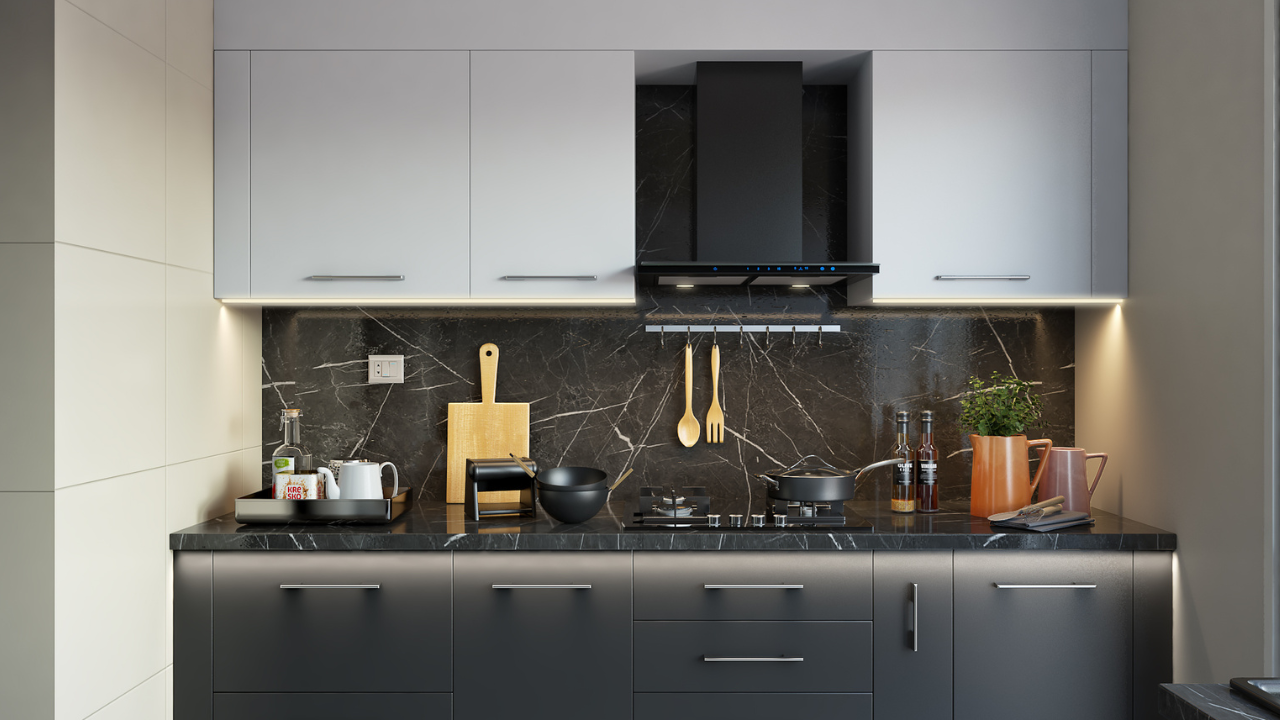How to Choose the Perfect Sofa for Your Living Room

The sofa is where you curl up with a good book, binge-watch your favourite TV shows, and even steal a quick afternoon nap. So, choosing the perfect sofa for your living room is a crucial decision, as it not only affects the aesthetics of the space but also determines comfort and functionality. It can be overwhelming with countless sizes, styles, materials, and budget options. In this blog, we’ll dive into the art and science of sofa selection for a thoughtful approach and some key considerations to find the ideal sofa to complement your living room.
-
Measure Your Space
- Assess Available Space: Note the size and shape of the area where you plan to place the sofa. Pay attention to architectural features such as alcoves, bay windows, and fireplaces, as these can impact where the sofa can go.
- Consider Existing Furniture: If you already have other furniture in your living room, like coffee tables, bookshelves, or entertainment centres, factor in their dimensions and placement. Ensure the new sofa complements the existing pieces without overcrowding the space.
- Measure Doorways and Entryways: To prevent delivery mishaps, measure the height and width of all doorways, hallways, and staircases the sofa must pass through. Some sofas come unassembled or with detachable legs, making delivery and manoeuvring easier in tight spaces. Be sure to discuss these options with the retailer.
- Account for Clearance: Remember to leave enough clearance space around the sofa. A general rule of thumb is to leave at least 18 inches of space between the sofa and other furniture or walls. This ensures ease of movement and contributes to a visually balanced layout.
- Sofa Size Matters: Consider the seats you need and the sofa’s depth and height. A large sectional may be perfect for a spacious living room, while a compact loveseat or apartment-sized sofa might be better for a cosier space.
-
Determine Your Style
Sofas come in various styles and configurations to suit different preferences and living room layouts. Here are some of the most common types of sofas:
- Traditional Sofa: These sofas typically have a classic design with rolled arms, tufted backrests, and ornate wooden legs. They are often upholstered in rich fabrics like velvet or leather, making them a timeless choice for traditional decor.
- Sectional Sofa: Designed with multiple sections arranged in various configurations, such as L-shaped or U-shaped. They provide ample seating and are perfect for larger living rooms or open floor plans.
- Modern Sofa: Characterised by clean lines and minimalistic design, and often have low profiles. They come in various materials, including leather and microfiber, and feature neutral colours.
- Chesterfield Sofa: These sofas are known for their distinctive rolled arms and deep button tufting. They have a luxurious and classic appearance, typically upholstered in leather, velvet, or other high-quality fabrics.
- Mid-Century Modern Sofa: Inspired by the design trends of the mid-20th century, these sofas feature sleek lines, tapered legs, and a minimalist aesthetic. They often come in bold colours and textured fabrics.
- Lawson Sofa: They have a simple, relaxed design with square or rolled arms and loose back cushions. They offer comfort and versatility and can adapt well to various decor styles.
- Camelback Sofa: These sofas are recognised by their arched backrest, which resembles the hump of a camel. They have a sophisticated, elegant look and are often upholstered in patterned or solid fabrics.
- Sleeper Sofa: Also known as sofa beds, sleeper sofas have a hidden mattress that can be pulled out to provide a comfortable sleeping surface. They are ideal for accommodating overnight guests in small spaces.
- Loveseat: They are compact sofas designed to seat two people comfortably. They come in various styles, making them suitable for small living rooms or complementary seating in larger spaces.
- Chaise Lounge: Sofas are long, reclining chairs used as standalone seating or as part of a sectional sofa. They are perfect for lounging and relaxation.
- Settee: These sofas are smaller, upholstered benches or sofas with a backrest. They are often used in entryways, dining rooms, or as accent pieces in various rooms.
- Reclining Sofa: They have built-in recliners that allow you to kick back and relax with extended leg support. They are popular in home theatres and living rooms for maximum comfort.
- Convertible Sofa: These versatile sofas can transform into different configurations, such as a sofa, chaise, or bed. They are excellent space-saving options for small apartments or multipurpose rooms.
- Tuxedo Sofa: Tuxedo sofas have arms the same height as the backrest, creating a clean and squared-off silhouette. They are often upholstered in solid colours and work well in traditional and modern settings.Must Visit: metercube Luxury Quality Sofa for Your Dream Home
-
Quality Matters
- Seat Depth: When you sit down, your thighs should rest comfortably on the seat and have enough space to lean back without feeling cramped. A too-shallow seat can make you feel perched on the edge, while too deep may strain your legs and back.
- Cushion Firmness: The right balance of cushion firmness is a matter of personal preference. Some people prefer firmer cushions that provide excellent support and maintain their shape over time. Others may favour softer cushions that offer a plush, sink-in feeling. Eight-way hand-tied springs are considered the gold standard for comfort and durability.
- Upholstery Material: Leather can be an excellent choice for a more structured and sleek feel. Over time, leather can soften and develop a unique patina, adding to its comfort and character. Fabric upholstery is softer and more breathable than leather.
- Back Support: Adequate back support is essential for long-term comfort. Look for sofas with well-padded and ergonomic backrests that offer proper lumbar support. This support is significant if you plan to spend extended periods sitting on the sofa, as it helps prevent discomfort and backaches.
- Armrests and Cushion Style: Consider the design of the sofa’s armrests and cushions. Sofas with padded, wide armrests can provide a comfortable place to rest your arms or even serve as impromptu seating. Some sofas have loose cushions that allow you to adjust and arrange them for comfort, while others have fixed cushions that provide consistent support.
- Frame Quality: A sturdy and well-constructed frame ensures the longevity and durability of your sofa, contributing to long-term comfort. Look for hardwood frames like oak or maple, known for their durability.
Mu
-
Colour and Pattern
Colour:
Neutral colours such as white, beige, grey, and black are timeless and versatile choices for sofas. Bold and vibrant sofa colours like deep blue, emerald green, or bright red can be striking focal points in a room. Pastel-coloured sofas, such as soft pink, light lavender, or pale mint, create a gentle and soothing atmosphere. They are often associated with a romantic or vintage aesthetic. And monochromatic colour schemes involve using various shades of a single colour. This creates a cohesive and harmonious look, with variations in tone adding depth and interest.
Pattern:
- Solid: Solid-coloured sofas are versatile and timeless. They can be a blank canvas for accessorising with patterned pillows, throws, and decor items. Solids are often chosen for their simplicity and ability to fit into various design styles.
- Stripes: These patterns add visual interest and dynamic energy to a sofa. They can range from classic and traditional to modern and bold, depending on the stripes’ width, colour, and direction.
- Floral: Evokes a sense of nature and femininity. They can range from delicate and exquisite to bold and vibrant, making them suitable for various design aesthetics.
- Geometric: Patterns, such as chevrons, herringbone, or hexagons, create a contemporary and structured look. They add a sense of order and symmetry to the space.
- Abstract: These patterns are often artistic and expressive. They can be visually stimulating and add a unique and creative touch to your sofa.
- Animal Print: Leopard or Zebra prints can be used sparingly to add a touch of exoticism and sophistication to your sofa.
-
Budget Wisely
- List your must-have features and qualities in a sofa. These could include factors like size, comfort, durability, and style. Identify what you need versus what you want. Prioritise your needs within your budget constraints.
- Assess how much you are willing to spend on a sofa to start. Consider your overall home furnishing budget and allocate a portion to the sofa. Having a specific budget will help you narrow your options and prevent overspending.
- Shop around and evaluate pricing from various online and offline retailers. Watch for sales, promotions, and discounts, especially during holidays, festive seasons, and major shopping events.
- Before finalising your purchase, visit physical stores to test different sofas for comfort and quality. Sit on them, lie down, and assess how they feel. This hands-on approach can help you make an informed decision.
To conclude, in your home, a sofa is like a cosy island where comfort and style meet, and the best moments happen. And speaking of well-crafted furniture, metercube is a testament to the pursuit of style and functionality. With a wide variety of metercube products, whether you’re searching for a cosy sectional for family gatherings, a chic and sleek modern sofa, or any other furniture pieces to complete your home, you can find the ideal sofa to enhance your living environment and make it uniquely your own.








